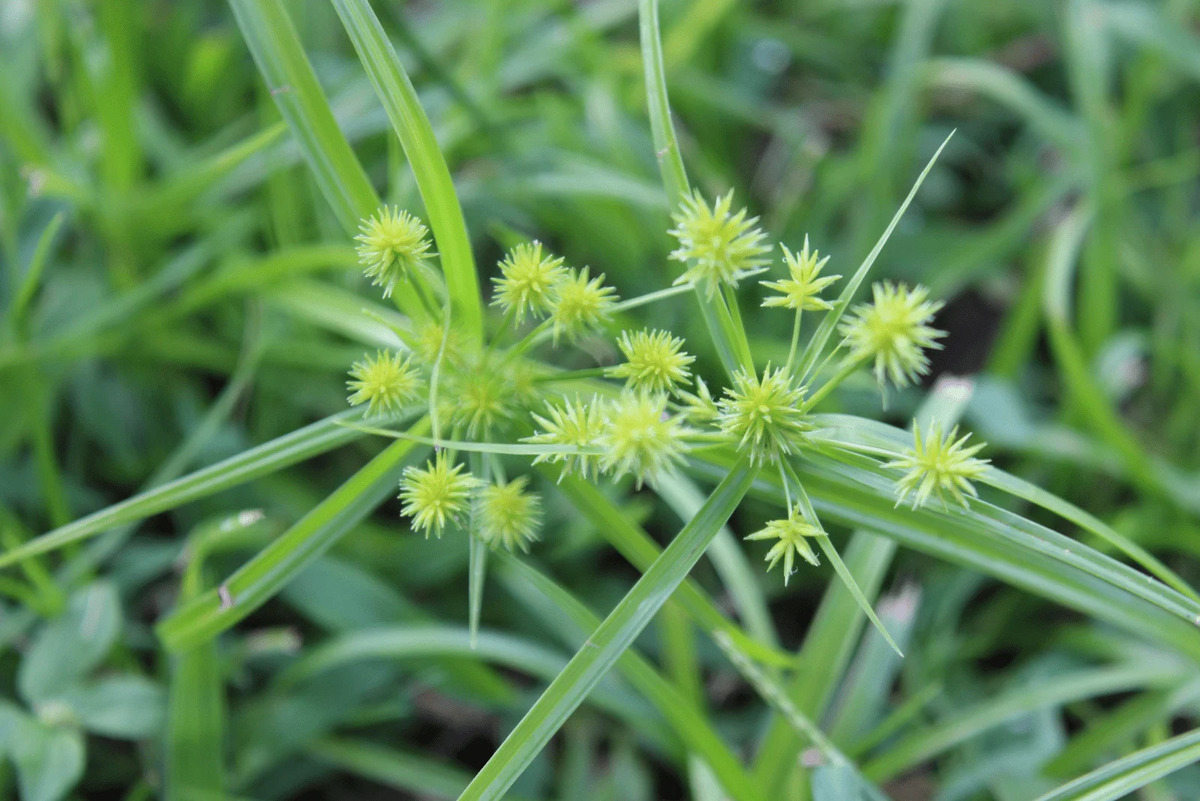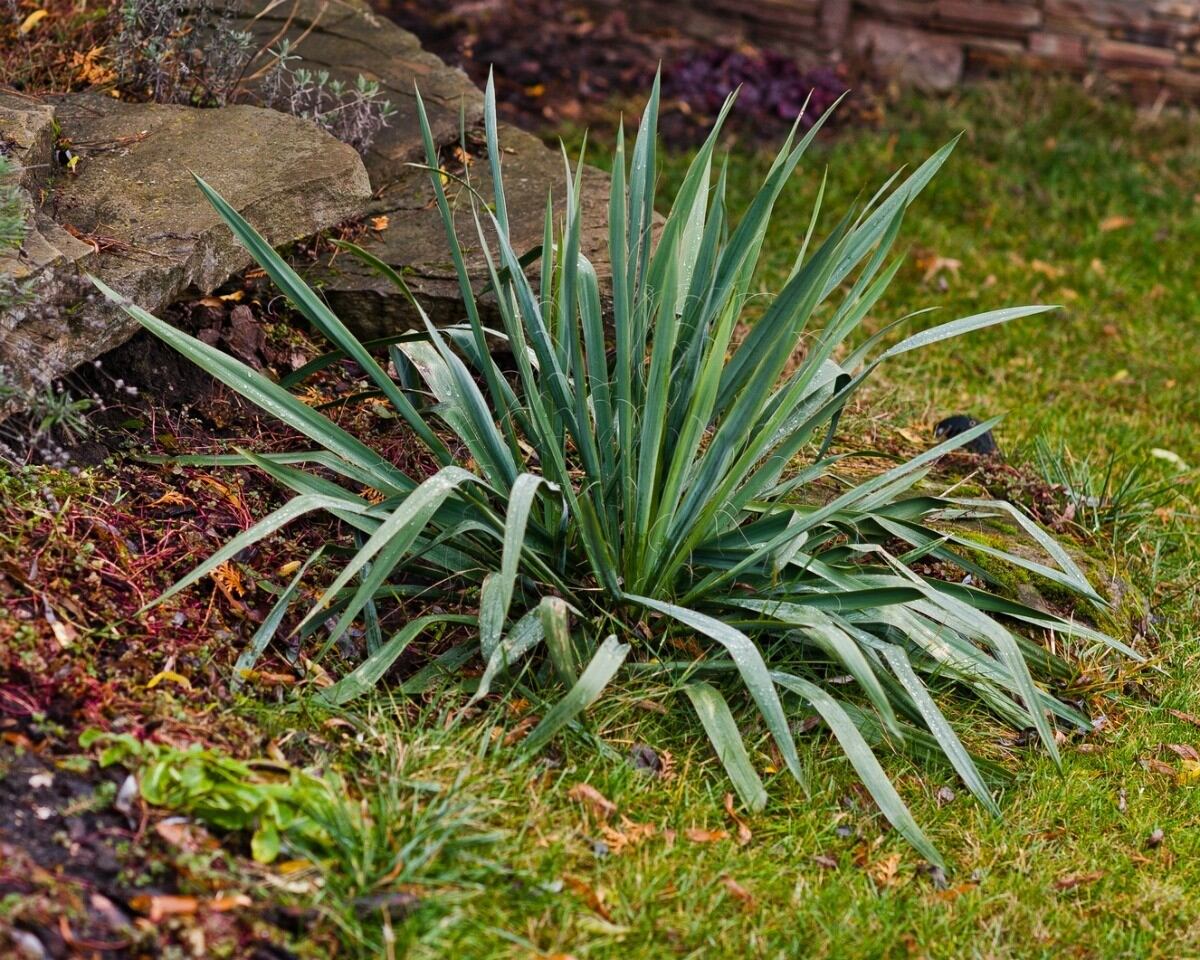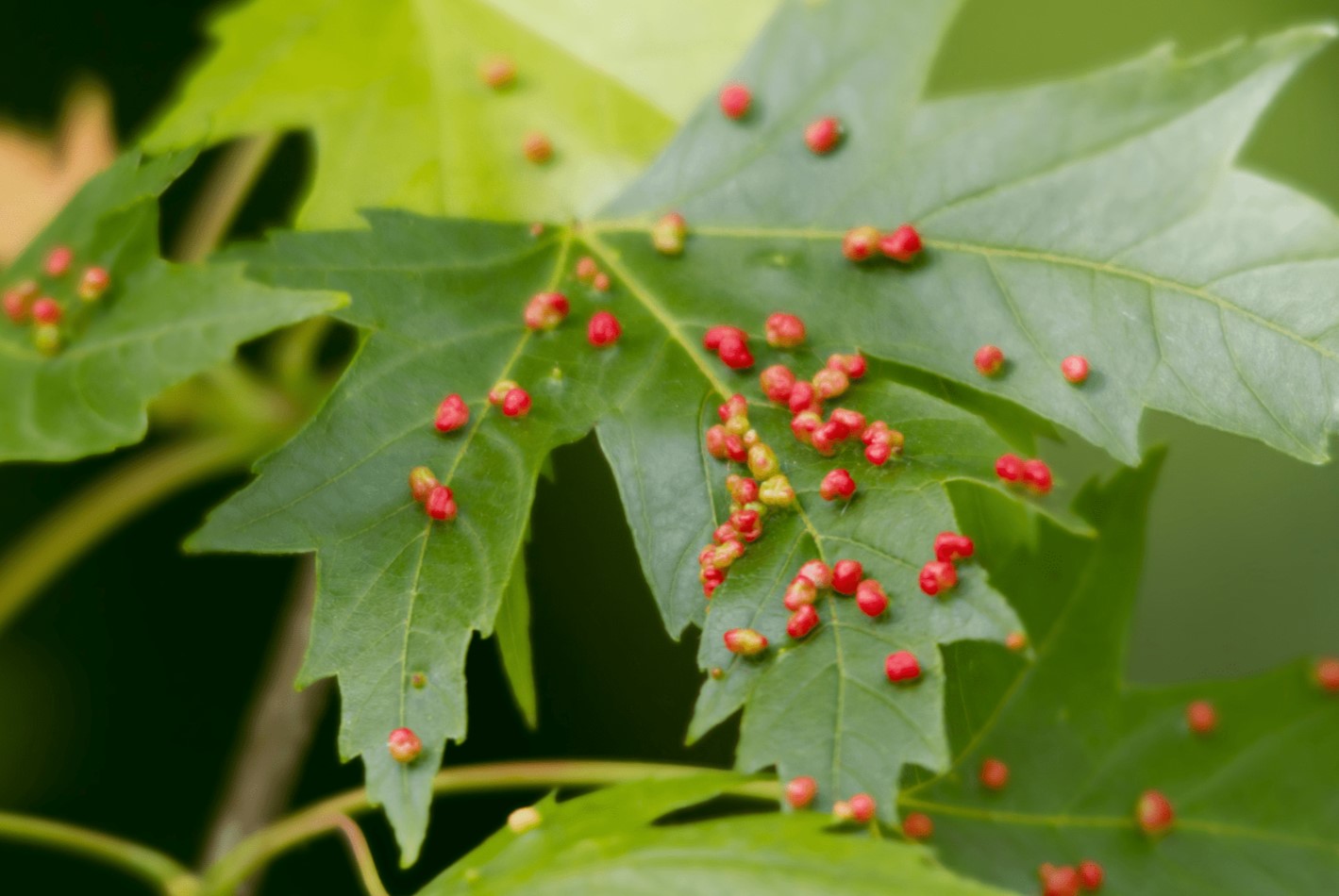Home>Gardening & Outdoor>Landscaping Ideas>How To Get Rid Of Midges In Grass


Landscaping Ideas
How To Get Rid Of Midges In Grass
Published: February 1, 2024
Learn effective landscaping ideas to get rid of midges in grass. Discover practical tips and solutions to keep your lawn midge-free.
(Many of the links in this article redirect to a specific reviewed product. Your purchase of these products through affiliate links helps to generate commission for Storables.com, at no extra cost. Learn more)
Introduction
Are you tired of midges wreaking havoc on your outdoor gatherings and peaceful evenings in the yard? These tiny, mosquito-like insects can quickly become a nuisance, but fear not – there are effective ways to reclaim your outdoor space and get rid of midges in your grass. In this comprehensive guide, we'll delve into the world of midges, exploring their habits and habitats, and equipping you with a range of prevention and elimination methods. Whether you prefer natural remedies or chemical treatments, we've got you covered with practical solutions to restore your outdoor haven to its midge-free glory.
Midges, often mistaken for mosquitoes due to their similar appearance, are small, non-biting insects that thrive in damp environments. They are commonly found near bodies of water, such as ponds, lakes, and wetlands, where they lay their eggs in the moist soil. As the larvae mature, they emerge as adult midges, swarming in large numbers and causing frustration for anyone attempting to enjoy outdoor activities.
Understanding the behavior and life cycle of midges is crucial in devising effective strategies to combat them. By implementing preventive measures and targeted treatments, you can significantly reduce midge populations and create a more comfortable outdoor environment for yourself, your family, and your guests.
So, if you're ready to bid farewell to these pesky pests and reclaim your outdoor space, let's dive into the world of midges and explore the best methods to eliminate them from your grass.
Key Takeaways:
- Say goodbye to midges by eliminating standing water, optimizing drainage, and using natural remedies like essential oils and beneficial bacteria. Keep your outdoor space midge-free for enjoyable gatherings and relaxation.
- Create a midge-free haven by maintaining your lawn, installing outdoor lighting, and considering chemical treatments if natural remedies aren’t enough. With a balanced approach, reclaim your outdoor space from pesky midges.
Read more: How To Get Rid Of Grasshoppers
Understanding Midges
Before embarking on your mission to banish midges from your grass, it’s essential to gain a deeper understanding of these tiny insects. Midges belong to the Chironomidae family and are often referred to as “blind mosquitoes” due to their resemblance to their blood-sucking counterparts. However, unlike mosquitoes, midges do not feed on blood and are primarily a nuisance due to their sheer numbers and swarming behavior.
Midges are attracted to moist environments, making grassy areas near water sources particularly susceptible to infestations. Their life cycle consists of four stages: egg, larva, pupa, and adult. The eggs are laid in water or damp soil, where they hatch into larvae. These larvae play a crucial role in the midge population, as they are responsible for the majority of midge activity. As they mature, the larvae transform into pupae before emerging as adult midges.
One of the key factors contributing to midge infestations is the presence of stagnant or slow-moving water. Bodies of water such as ponds, marshes, and even clogged gutters provide ideal breeding grounds for midges. Additionally, damp grass and soil create a hospitable environment for midge larvae, allowing them to thrive and multiply rapidly.
Understanding the behavior and preferences of midges enables you to identify and address the underlying factors contributing to their presence in your grass. By targeting their breeding and resting sites, you can disrupt their life cycle and reduce their numbers, ultimately mitigating the nuisance they pose.
Now that we’ve gained insights into the world of midges, including their habitats and life cycle, it’s time to explore effective prevention methods to deter these pesky insects from invading your outdoor space.
Prevention Methods
Preventing midge infestations in your grass involves implementing measures to deter these insects from breeding and congregating in your outdoor space. By addressing the underlying factors that attract midges, you can significantly reduce their presence and minimize the need for extensive eradication efforts. Here are some effective prevention methods to consider:
- Eliminate Standing Water: Since midges lay their eggs in moist soil or water, it’s crucial to eliminate any sources of standing water in your yard. Regularly inspect and address areas where water accumulates, such as bird baths, clogged gutters, and containers. By reducing potential breeding sites, you can discourage midges from multiplying near your grass.
- Optimize Drainage: Improving the drainage in your yard can help minimize excess moisture, making the environment less hospitable for midges. Consider addressing any areas where water tends to pool or accumulate, and ensure that your lawn and garden beds are well-drained to discourage midge larvae from thriving.
- Maintain Your Lawn: Regular mowing and proper lawn maintenance can contribute to reducing midge populations. By keeping your grass trimmed and well-groomed, you can create a less favorable habitat for midges, as they prefer tall, dense vegetation for resting and breeding.
- Install Outdoor Lighting: Utilizing outdoor lighting that is less attractive to midges can help deter them from congregating in your yard. Opt for yellow or sodium vapor lights, which are less appealing to midges compared to standard white lights. This can help minimize midge activity during evening hours, enhancing your outdoor experience.
- Use Mosquito Nets or Screens: When hosting outdoor gatherings or spending time in areas prone to midge activity, consider using mosquito nets or screens to create a barrier against these insects. This can provide a protective shield, allowing you to enjoy your outdoor space without constant midge disturbances.
By implementing these preventive measures, you can create an environment that is less conducive to midge infestations, effectively reducing their presence in your grass and outdoor living areas. However, if midges have already established a strong presence, it may be necessary to explore natural remedies and targeted treatments to address the issue.
One effective way to get rid of midges in grass is to reduce moisture in the area by improving drainage and avoiding overwatering. Midges thrive in damp environments, so reducing moisture can help control their population.
Natural Remedies
When seeking to combat midge infestations in your grass and outdoor spaces, natural remedies offer effective and environmentally friendly solutions. These methods harness the power of natural ingredients and biological control agents to deter midges and reduce their populations without resorting to chemical treatments. Here are some natural remedies to consider:
- Beneficial Bacteria: Introducing beneficial bacteria, such as Bacillus thuringiensis israelensis (Bti), to water sources can help control midge larvae. Bti is a naturally occurring bacterium that specifically targets mosquito and midge larvae, making it a safe and targeted solution for reducing midge populations in bodies of water near your grass.
- Essential Oils: Certain essential oils, such as citronella, lavender, and eucalyptus, possess natural insect-repellent properties. Diluting these oils and applying them to outdoor surfaces or using them in diffusers can help deter midges and create a more pleasant outdoor environment.
- Natural Predators: Encouraging the presence of natural midge predators, such as dragonflies and certain bird species, can contribute to controlling midge populations. Creating a welcoming habitat for these natural predators, such as providing water sources and suitable nesting sites, can help maintain a balanced ecosystem and reduce midge numbers.
- Herbal Repellents: Planting midge-repelling herbs, such as basil, mint, and lemongrass, in your garden or near outdoor seating areas can help deter midges. These aromatic plants emit scents that are unpleasant to midges, serving as a natural deterrent while enhancing the visual appeal of your outdoor space.
- Biodegradable Larvicides: Utilizing biodegradable larvicides that target midge larvae can be an effective natural remedy. These products contain naturally occurring ingredients that disrupt the development of midge larvae, reducing their numbers in water bodies and damp soil.
By incorporating these natural remedies into your midge control strategy, you can address infestations while minimizing the impact on the environment and beneficial insects. However, in cases where midge populations are particularly persistent or extensive, exploring targeted chemical treatments may be necessary to achieve comprehensive control.
Chemical Treatments
When natural remedies and preventive measures are insufficient in controlling midge populations in your grass and outdoor areas, targeted chemical treatments can provide effective solutions for mitigating infestations. It’s important to approach chemical treatments with caution and select products that are specifically formulated for midge control while minimizing environmental impact. Here are some chemical treatments to consider:
- Insect Growth Regulators (IGRs): IGRs are synthetic chemicals that disrupt the growth and development of midge larvae, preventing them from reaching maturity. These products target specific stages of the midge life cycle, effectively reducing their numbers without posing significant risks to non-target organisms.
- Larvicidal Oils: Certain larvicidal oils are formulated to target midge larvae in water bodies and damp soil. These oils suffocate the larvae, effectively reducing midge populations without leaving long-lasting residues in the environment.
- Biological Larvicides: Biological larvicides, such as those containing the active ingredient Bacillus thuringiensis israelensis (Bti), offer targeted control of midge larvae while posing minimal risk to non-target organisms. These products provide a safe and effective means of reducing midge populations in bodies of water near your grass.
- Residual Insecticides: In situations where midge infestations persist, residual insecticides formulated for outdoor use can provide effective control. These products create a barrier that targets adult midges, reducing their numbers and preventing them from congregating in your outdoor living spaces.
- Professional Application: Seeking the assistance of professional pest control services can ensure the safe and effective application of chemical treatments for midge control. Trained professionals can assess the extent of the infestation and apply targeted treatments while adhering to environmental safety protocols.
When considering chemical treatments for midge control, it’s essential to prioritize products that are approved for outdoor use, pose minimal risks to beneficial insects and the environment, and are applied in accordance with label instructions. Additionally, integrating chemical treatments with natural remedies and preventive measures can contribute to comprehensive and sustainable midge management in your outdoor space.
By leveraging these chemical treatments judiciously and in conjunction with other control methods, you can effectively address midge infestations and create a more enjoyable outdoor environment for yourself and your loved ones.
Read more: How To Get Rid Of Crabgrass
Conclusion
As you navigate the realm of midge control and strive to reclaim your grass and outdoor living spaces from these pesky insects, it’s essential to adopt a multifaceted approach that combines preventive measures, natural remedies, and targeted treatments. By understanding the behavior and preferences of midges, you can implement strategies that disrupt their life cycle and reduce their presence, ultimately enhancing your outdoor experience.
Prevention is key when it comes to managing midge infestations, and addressing factors such as standing water, drainage, and outdoor lighting can significantly deter midges from congregating in your yard. Additionally, incorporating natural remedies, such as beneficial bacteria, essential oils, and natural predators, offers environmentally friendly solutions for controlling midge populations while minimizing the impact on beneficial insects and the ecosystem.
When natural remedies and preventive measures are insufficient in managing midge infestations, targeted chemical treatments can provide effective control while prioritizing environmental safety. Selecting products such as insect growth regulators, larvicidal oils, and biological larvicides can help reduce midge populations without posing significant risks to non-target organisms, ensuring a balanced and sustainable approach to midge management.
By integrating these strategies and remaining vigilant in your efforts to deter and control midges, you can create a more comfortable and enjoyable outdoor environment for relaxation, gatherings, and recreational activities. Whether you opt for natural remedies, chemical treatments, or a combination of both, the ultimate goal is to strike a balance between effective midge control and environmental stewardship, allowing you to fully embrace your outdoor oasis without the intrusion of these persistent insects.
With a proactive and holistic approach to midge management, you can look forward to enjoying your grassy haven free from the nuisance of midges, enabling you to savor the beauty of the outdoors to the fullest.
Frequently Asked Questions about How To Get Rid Of Midges In Grass
Was this page helpful?
At Storables.com, we guarantee accurate and reliable information. Our content, validated by Expert Board Contributors, is crafted following stringent Editorial Policies. We're committed to providing you with well-researched, expert-backed insights for all your informational needs.















0 thoughts on “How To Get Rid Of Midges In Grass”